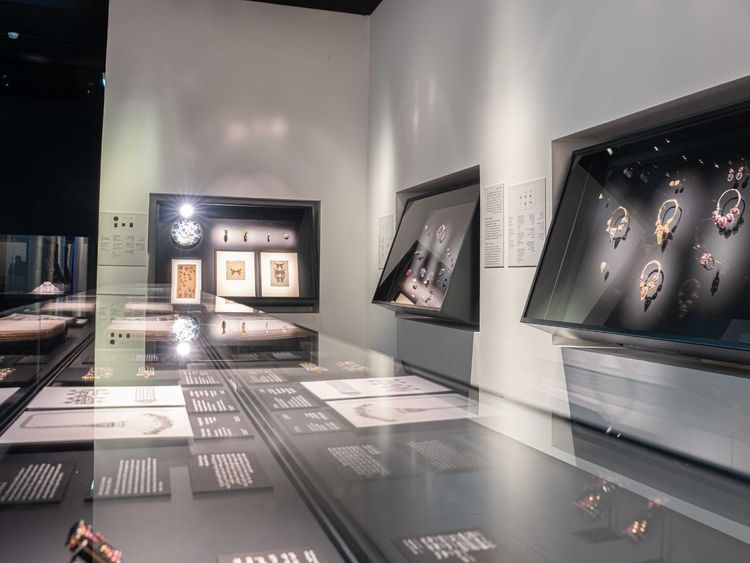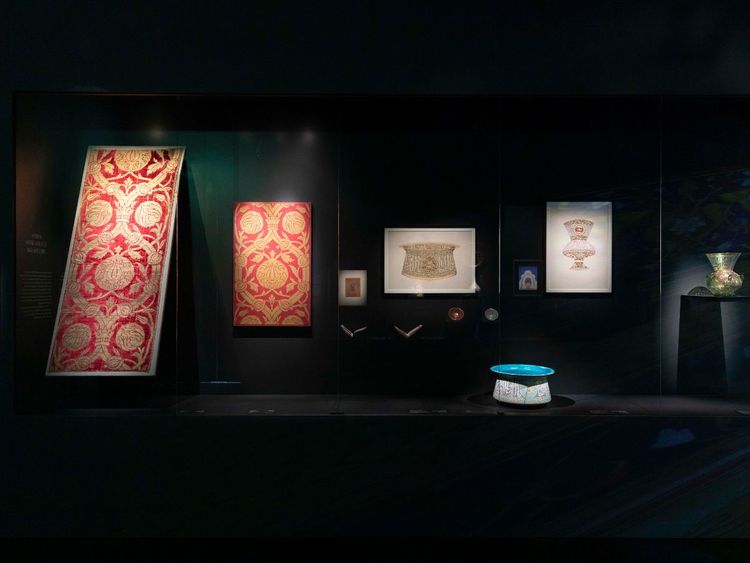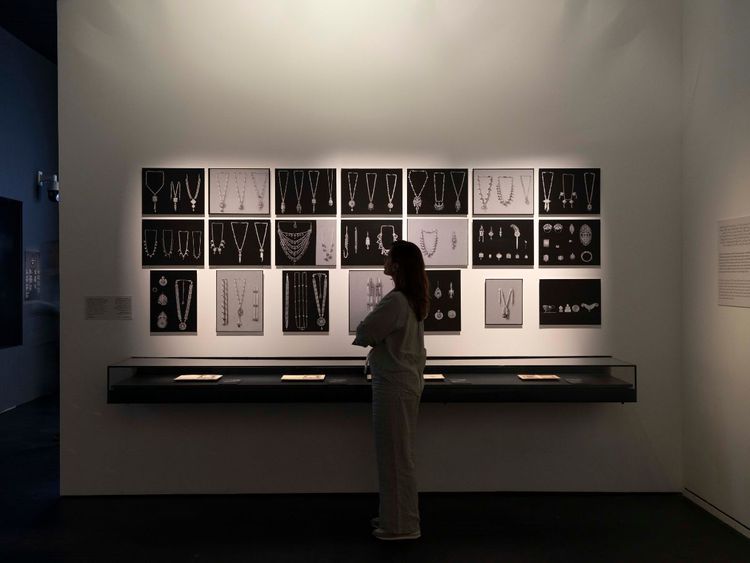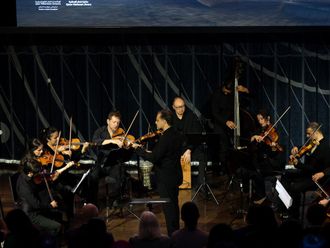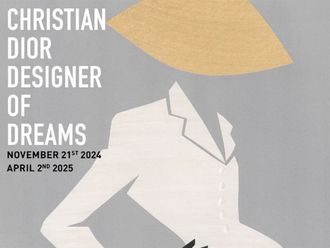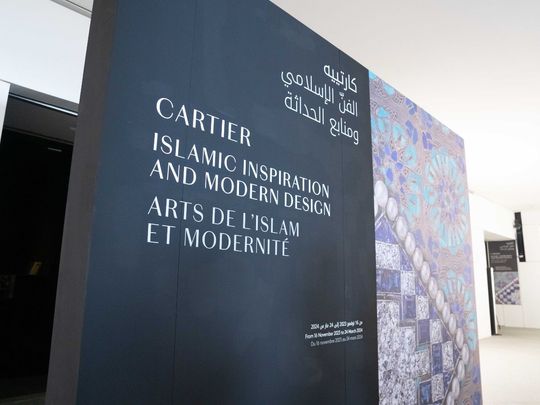
A new exhibition at the Louvre Abu Dhabi tells the tale of one of the world’s most famous jewellery house’s fascination with the Arab world. “Cartier: Islamic Inspiration and Modern Design,” opened on November 16 and will run until 24 March 2024. The show presents over 400 works, including jewellery, precious objects, masterpieces of Islamic art, textiles, drawings and photographs, among other important historical items.
The show, which is a reimagined version of “Cartier and Islamic Art: In Search of Modernity” that was shown at the musée des Arts décoratifs in Paris in 2021 and the Dallas Museum of Art in Texas in 2022, presents the influence of Islamic arts on Cartier since the beginning of the 20th century.
The exhibition was co-curated by Évelyne Possémé, Former Chief Curator of Ancient and Modern Jewellery at the musée des Arts décoratifs, Paris; Judith Henon-Raynaud, Chief Curator and Deputy Director of the Department of Islamic Art at the musée du Louvre, Paris, with the assistance of Fakhera Alkindi, Senior Curatorial Assistant at the Louvre Abu Dhabi.

Cartier’s true pioneering spirit was revealed at the turn of the 20th century when in 1912, Jacques Cartier, accompanied by his sales -assistants, -travelled to the Arabian Gulf in pursuit of the world’s most precious and exquisite pearls.
The voyage inspired the start of the maison’s longstanding relationship with the Middle East. “At sunset, the city appeared above sea and was reminiscent of a mirage,” he wrote in his diary documenting his travels. At the turn of the 20th century, numerous major exhibitions dedicated to Islamic art were staged in Europe. With the arrival of numerous works of art, including Persian and Indian paintings and manuscripts, an ambiance of Arabian and Persian fashion and style developed in Paris.
Louis Cartier, the grandson of Cartier, was equally fascinated by the arrival of works from the East and Far East. They led to new sources of inspiration at the Maison and prompted the enrichment of Cartier’s library with new additions on books dedicated to Islamic art and architecture.
During the year 1910, Louis Cartier even began his own personal collection of Islamic art. A year later, in 1911, his brother Jacques Cartier traveled to India to better the Maison’s ties with the Maharajas and to the Arabian Gulf to explore the pearl market, which was the biggest in the world at the time.
The Louvre Abu Dhabi exhibition is complemented by digital projections that serve to immerse visitors into the mesmerizing and meticulously crafted world of Cartier pieces inspired by Islamic arts. The exhibition has been staged with a stunning scenography that matches the exquisite nature of the pieces presented designed by the New York-based design studio Diller Scofidio + Renfro.
“Islamic art has played a significant and structural impact on Cartier’s creative language since the beginning of the 20th century,” Pierre Rainero, Image Style and Heritage Director at Cartier, said in a statement. “This vocabulary continues to grow even today, thanks to the richness of geometric patterns and their many combinations. This is an exhibition, he emphasises, which “underscores the living language of the Cartier style, and in turn highlights how important jewellery is to the artistic field.”
Highlights from Louvre Abu Dhabi’s collection include a wooden Carved ivory panel with scrolls (1334-1339) from Cairo, Egypt; a Dish with a blue Saz leaf, dotted tulips and roses from circa 1580 in Iznik, Turkey; a Glass vessel in the shape of a mosque lamp by Joseph Brocard (1871) from Paris, France; and a binding and title page of the Rubaiyat by Omar Khayyam (1912) also from Paris.
Among the works being lent by the Cartier collection is a vanity case with decoration inspired by Iznik ceramics from Paris and dating to 1927 and a Hindu necklace made in 1936. There is also on view a stunning tiara by Cartier London from 1937.
Lastly, of note is an exceptional collection of design sketches by Charles Jacqueau, an important designer of Maison Cartier that has been loaned by Le Petit Palais.
The exhibition is the result of five years of research in archives, drawings and photographs to discover the connections between Cartier creations and Islamic art and to distinguish their sources of inspiration. The pieces revealed allows the viewer to understand the importance of the discovery of Islamic art for artists abroad at the start of the 20th century. It tells the story of the ensuing cross--cultural dialogue between the Middle East and Europe that undeniably influenced numerous masterpieces.
The show tells the tale of cross--cultural aesthetic dialogue between Europe and the East through the longstanding history of Cartier to the art and architecture of the Middle East. This relationship forged a new visual dialogue—one that married the East and the West—and one that continues to this day


